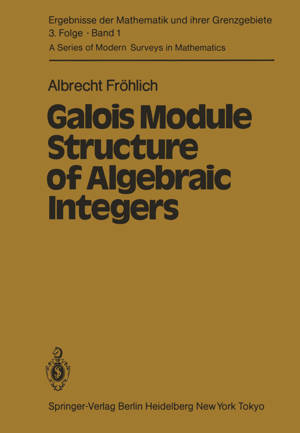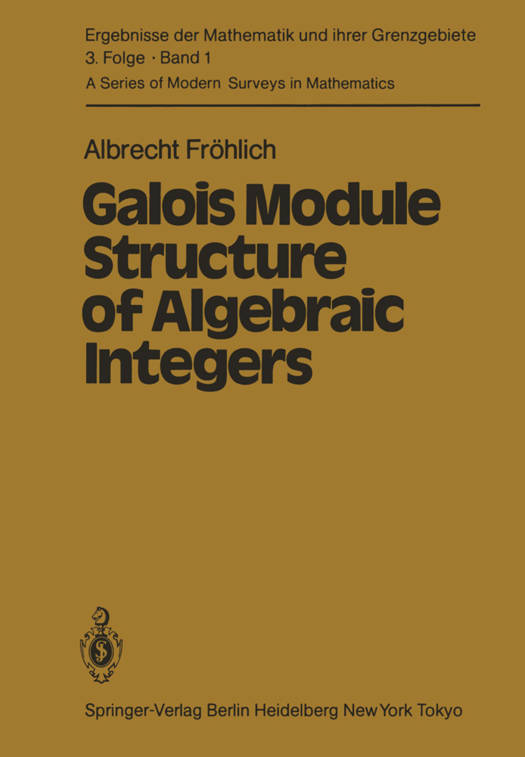
Je cadeautjes zeker op tijd in huis hebben voor de feestdagen? Kom langs in onze winkels en vind het perfecte geschenk!
- Afhalen na 1 uur in een winkel met voorraad
- Gratis thuislevering in België vanaf € 30
- Ruim aanbod met 7 miljoen producten
Je cadeautjes zeker op tijd in huis hebben voor de feestdagen? Kom langs in onze winkels en vind het perfecte geschenk!
- Afhalen na 1 uur in een winkel met voorraad
- Gratis thuislevering in België vanaf € 30
- Ruim aanbod met 7 miljoen producten
Zoeken
Omschrijving
In this volume we present a survey of the theory of Galois module structure for rings of algebraic integers. This theory has experienced a rapid growth in the last ten to twelve years, acquiring mathematical depth and significance and leading to new insights also in other branches of algebraic number theory. The decisive take-off point was the discovery of its connection with Artin L-functions. We shall concentrate on the topic which has been at the centre of this development, namely the global module structure for tame Galois extensions of numberfields -in other words of extensions with trivial local module structure. The basic problem can be stated in down to earth terms: the nature of the obstruction to the existence of a free basis over the integral group ring ("normal integral basis"). Here a definitive pattern of a theory has emerged, central problems have been solved, and a stage has clearly been reached when a systematic account has become both possible and desirable. Of course, the solution of one set of problems has led to new questions and it will be our aim also to discuss some of these. We hope to help the reader early on to an understanding of the basic structure of our theory and of its central theme, and to motivate at each successive stage the introduction of new concepts and new tools.
Specificaties
Betrokkenen
- Auteur(s):
- Uitgeverij:
Inhoud
- Aantal bladzijden:
- 266
- Taal:
- Engels
- Reeks:
- Reeksnummer:
- nr. 1
Eigenschappen
- Productcode (EAN):
- 9783642688188
- Verschijningsdatum:
- 7/12/2011
- Uitvoering:
- Paperback
- Formaat:
- Trade paperback (VS)
- Afmetingen:
- 170 mm x 244 mm
- Gewicht:
- 444 g

Alleen bij Standaard Boekhandel
+ 167 punten op je klantenkaart van Standaard Boekhandel
Beoordelingen
We publiceren alleen reviews die voldoen aan de voorwaarden voor reviews. Bekijk onze voorwaarden voor reviews.









